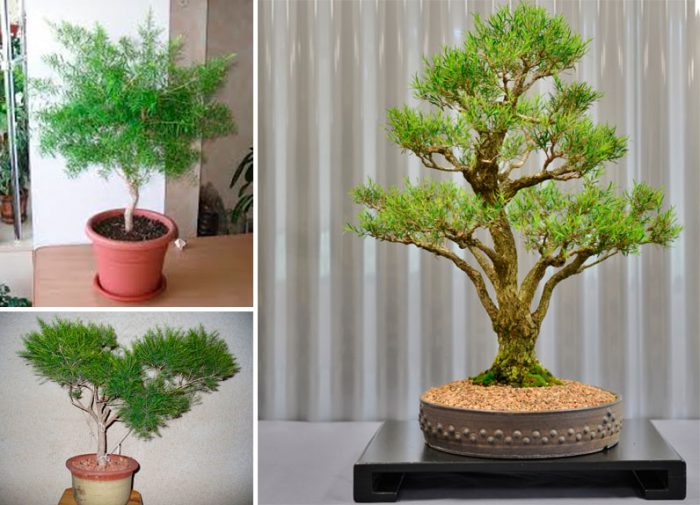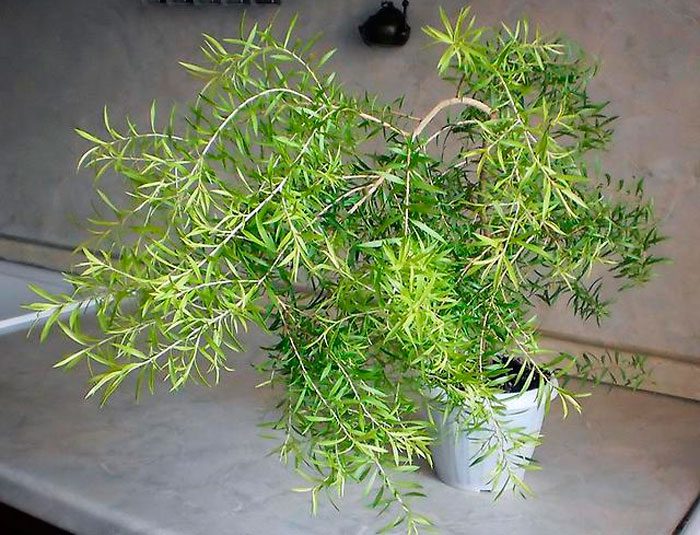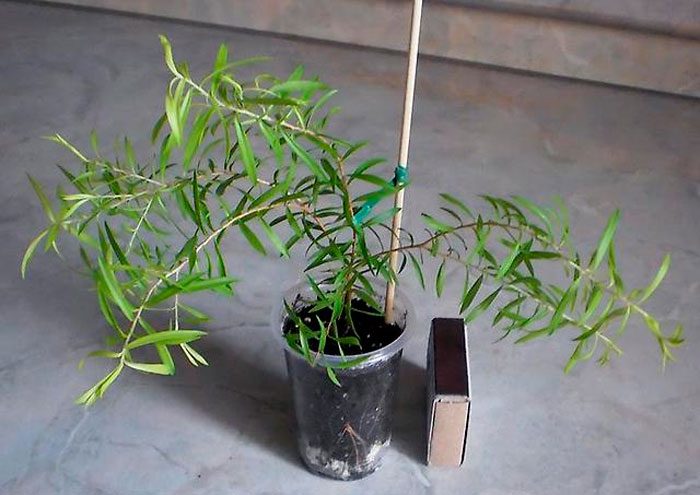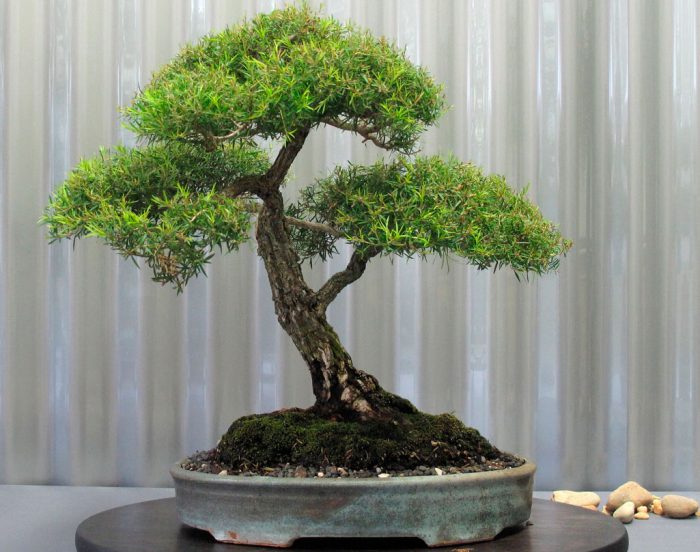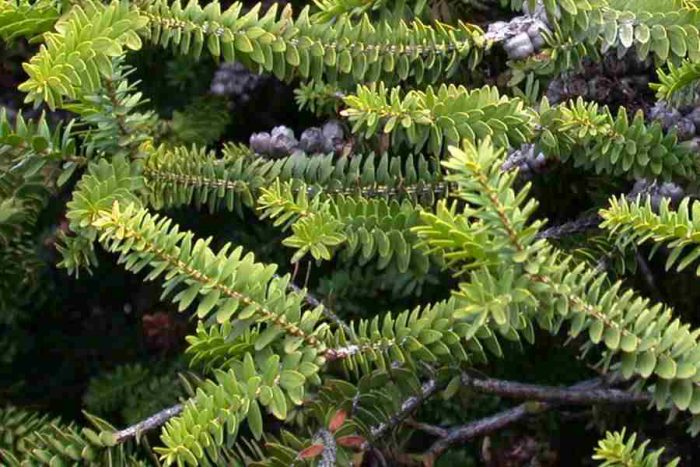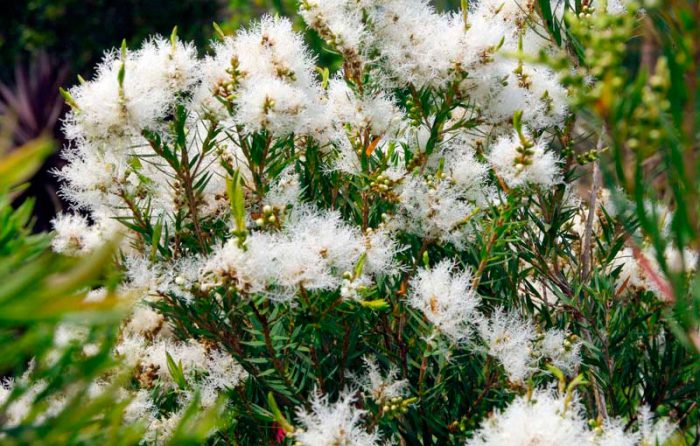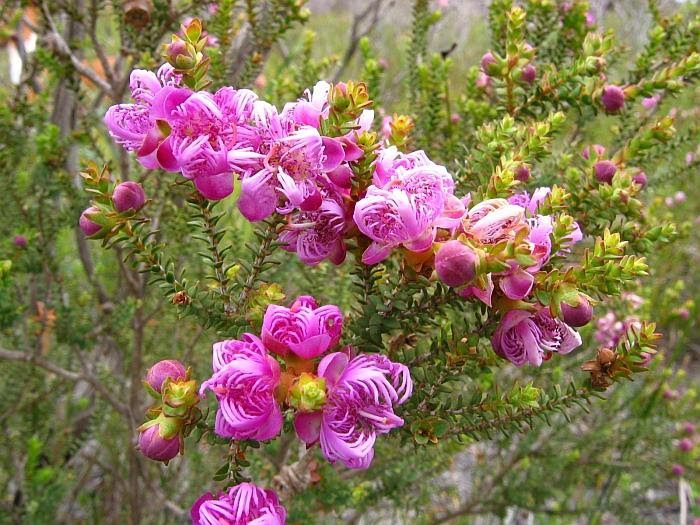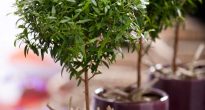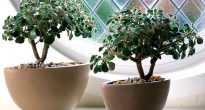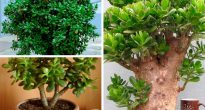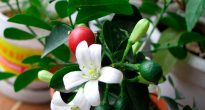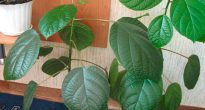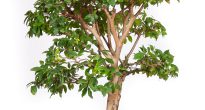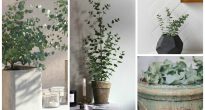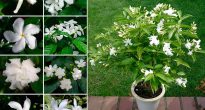Kind of like melaleuca (tea tree) directly related to the myrtle family. It brings together about 200 species of evergreen shrubs and trees. In nature, they can be found in Indonesia, New Caledonia, Australia, Papua New Guinea, and also in Malaysia.
Simple leaves have a lanceolate or ovoid shape, and they are located on the shoots, in most cases, alternately. Some species have no petioles at all, while others are short. Fragrant flowers are collected in rather loose inflorescences, having the shape of a ball or cylinder, they are similar in appearance to a panicle or brush. The peculiarity of the inflorescences is that each of them continues with a new growth. The flower mainly consists of stamens, which are collected in 5 bunches. Its petals fall off when flowering is just beginning. Over time, strong closed capsules appear in place of flowers, inside which there are seeds. These capsules are very tightly pressed against the branches.
Such a plant not only has inflorescences of an unusual shape, it also has a flaky bark, painted in a light color shade. There are species with exfoliating thin, rather large pieces of bark, which is why the tea tree is popularly called the paperbark tree.
Moreover, these trees and shrubs are medicinal, which was recognized by official medicine at the beginning of the 20th century. Essential oils are found in large quantities in any part of the plant, which destroy microbes, viruses and fungi.
Tea tree care at home
This plant is not very capricious and can be grown quite simply at home. However, in order for the tea tree to bloom regularly, it is necessary to provide the most favorable conditions.
Earth mix
Suitable soil should be slightly acidic or neutral and fairly loose. For self-preparation of a suitable soil mixture, it is necessary to combine sod land, peat and sand in a 1: 2: 1 ratio. When planting beautiful melaleuca, you need to increase the proportion of sand.
Fertilizer
The plant must be fertilized during intensive growth 2 times a month. To do this, use a complex fertilizer for indoor plants.
How to water
In the wild, the tea tree prefers to grow on river banks, as well as in swampy areas. In this regard, it must be systematically watered abundantly.If the soil is allowed to dry out completely, then the plant, as a rule, dies. But you should not allow stagnation of water in the soil either, because this can provoke rotting of the root system.
For irrigation, use soft settled water. To soften hard water, experienced flower growers advise adding a little acetic or citric acid to it.
With a cool winter, water the plant a little less and less often. So, watering is done after the top layer of the substrate dries slightly.
Humidity
High humidity is required. In order to increase it, systematic spraying is needed (especially on hot summer days). Also, to increase humidity, expanded clay and water can be poured into the pallet.
Illumination
It needs bright lighting, but it needs to be shaded from the midday direct rays of the sun. Daylight hours should be approximately 12 hours, and the illumination level should be 6000–7800 lux. If there is not enough light, then the plant must be supplemented with special phytolamps. In the event that there is enough light for the tea tree all year round, it can bloom again in winter. If there is little light, then the shoots become elongated, and part of the foliage falls off.
Temperature regime
If supplementary lighting for the plant is not provided, then its wintering must be cold (about 10 degrees). In summer, melaleuca feels good even at high temperatures, however, the midday direct rays of the sun can leave burns on the foliage.
Pruning
Systematic pruning is required all year round. The bush can be given absolutely any shape, as well as shaped it in the form of a tree or a bush. Also, during pruning, you can also remove branches that have already faded, since the resulting seed boxes spoil the spectacular appearance of the plant.
Young plants must be pruned. In order for the bush to branch better, it is cut off at a height of 10 centimeters. After that, you should prune each new stem until you achieve the desired branching.
Transplant features
While the tea tree is young, it must be replanted once a year, while choosing a pot with a larger diameter than the previous one. Adult specimens undergo this procedure as needed, for example, when the roots no longer fit in the pot. You may not transplant into another pot, but simply cut the root system and replace the top layer of the substrate.
Reproduction methods
This plant can be propagated by seeds, as well as lignified annual cuttings. The seeds are simply scattered over the surface of the moist soil, and there is no need to deepen them. Then the container is covered with glass and placed in a well-lit place. The first shoots can be seen after a little more than a week, but if the temperature is less than 20 degrees, then this can take up to 4 weeks. At first, the growth of seedlings is extremely slow and a greater number of young plants may die. A tea tree grown from seed blooms for the first time in the 6th year of life.
Semi-lignified cuttings can be 6 to 8 centimeters long. They can be rooted both in the soil and in a glass of water. To increase the chance of rooting, you can use remedies that stimulate root growth.
Diseases and pests
Most often, they settle on a plant grown in indoor conditions spider mites, but they can still start and mealybugs... In order to destroy them, it is necessary to carry out treatment with appropriate insecticides. For example, you can take Akarin, Aktellik or Fitoverm.
Most often, the plant is sick due to violations of the rules of care. So, all the foliage may fall off or burns from direct sunlight appear on it, the root system rots or the tea tree dies altogether.
You should know! Alternate-leaved melaleuca can be easily confused with paniculata leptoospermum (also called manuka or New Zealand tea tree). So, often, images of another are attached to the description of one plant.They are actually very similar in leaves, but their flowers are completely different. Also, these plants differ in fields of application and properties. In this regard, when preparing some kind of folk medicine, it is necessary to find out exactly which of the plants is meant.
Main types
For growing at home, the types listed below are most often chosen.
Melaleuca alternifolia (Melaleuca alternifolia)
Or the Australian tea tree - this species is most often grown at home. A plant native to northeastern Australia. This is a short tree, which is characterized by slow growth and green narrow long leaves that are very similar to spruce needles. In length they reach 1–3.5 centimeters, and in width - about 1 millimeter. Blooms from late spring to early summer, with abundant flowering. Snow-white dense inflorescences reach 3–5 centimeters in length, and outwardly they are very similar to small cylindrical brushes.
Melaleuca diosmifolia (Melaleuca diosmifolia)
Or green honey myrtle is also one of the most popular types in home floriculture. He is originally from Western Australia. This small shrub has small (about 1 centimeter long) green leaves. They are located on the stems extremely tightly in a spiral, while they have the shape of an oval. Green-lemon flowers are collected in small (up to 5 centimeters long) inflorescences in the shape of a cylinder, which are located on short lateral stems. Flowering lasts from late spring to early autumn.
Linseed melaleuca (Melaleuca linariifolia)
This plant is native to the east coast of New South Wales and South Queensland. It is a short evergreen tree with fast growth. Greenish-gray alternate leaves like linseed. In length they reach from 2 to 4.5 centimeters, and in width - up to 4 millimeters. In the summer, the plant blooms flowers, which have an external resemblance to bird down feathers. They are collected in snow-white short (up to 4 centimeters in length) inflorescences that are similar to panicles. Due to the abundant flowering, during which the flowers cover the plant almost completely, in some English-speaking countries it is also called Snow in Summer, which means "Summer Snow". In indoor floriculture, the "Snowstorm" variety is very popular, which is a dwarf form of linseed melaleuca.
Melaleuca beautiful (Melaleuca pulchella)
Or claw honey myrtle - native to Western Australia. It is a low creeping shrub. Its dark green oval-shaped leaves are very small, so they reach 2-6 millimeters in length. Pink-purple flowers, which have an unusual shape, are collected in rather rare inflorescences. The flowers have 5 groups of long fused stamens, which are located next to the sepals. The shape of the flower is bent inward and therefore it seems that in front of you are fingers with claws in the form of anthers. Therefore, this plant is also called the Claw flower (Flower-claw).
Melaleuca nesophila
Or pink honey myrtle (Showy Honey Myrtle) - the home of this tall shrub is Western Australia. Greenish-gray leaves reach 2 centimeters in length. Lilac-pink flowers are collected in small (up to 3 centimeters in diameter) inflorescences shaped like a ball. Flowering is observed from late spring to mid-summer. The most popular variety is "Little Nessy" (Little Nessy) - a spectacular dwarf shrub.
In special stores you can buy other equally decorative varieties of tea trees.

